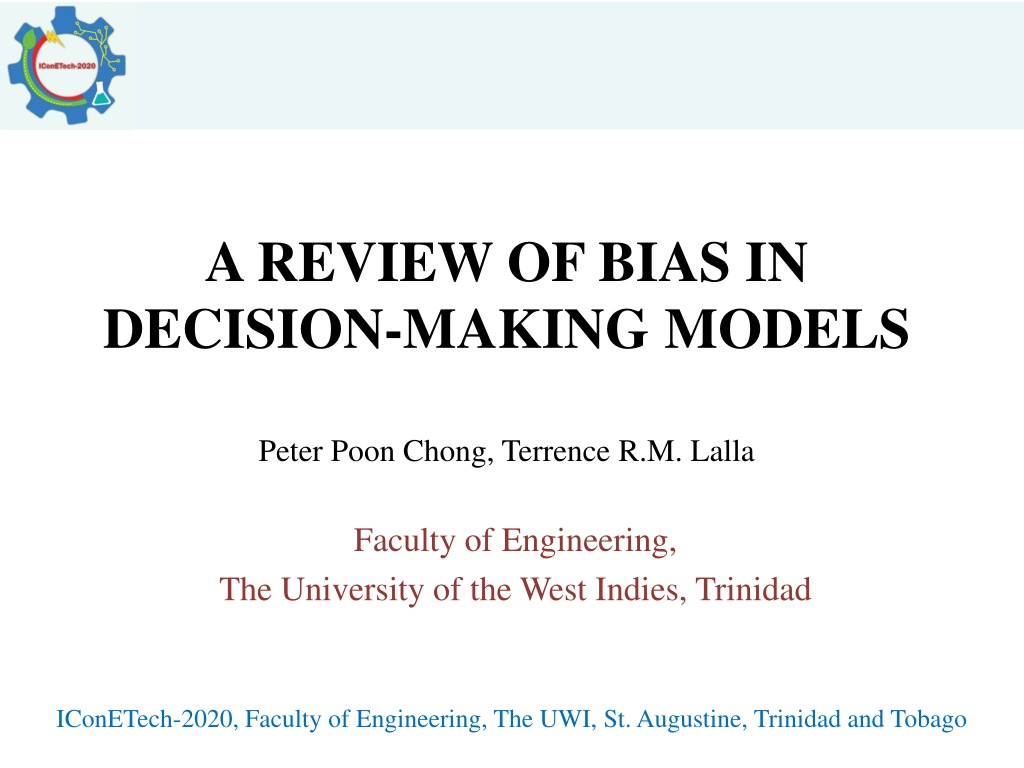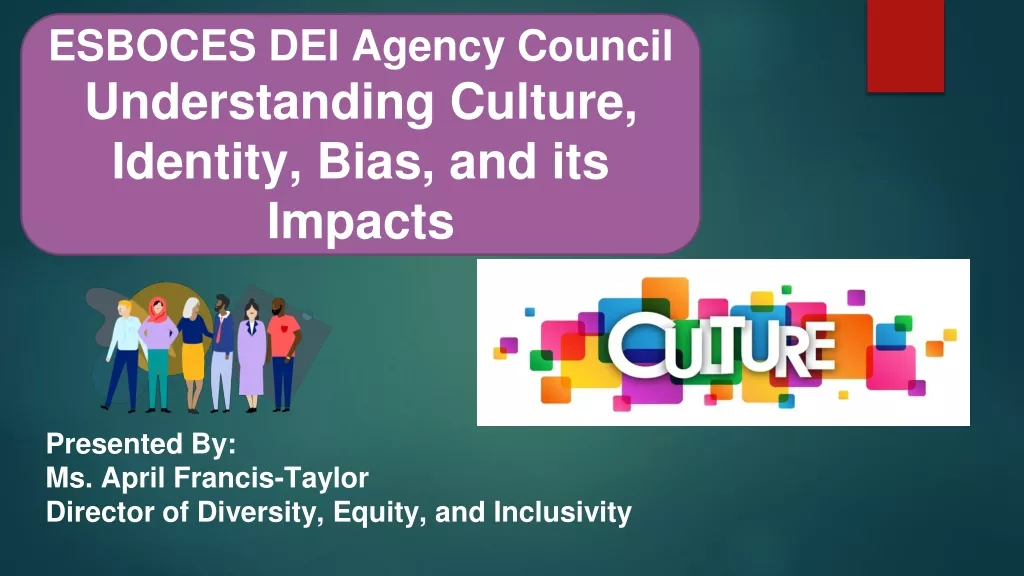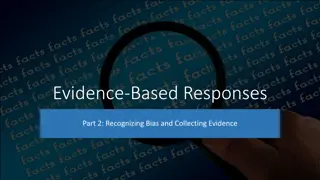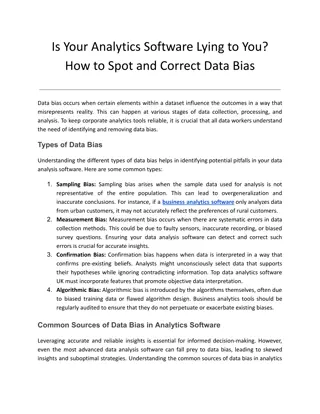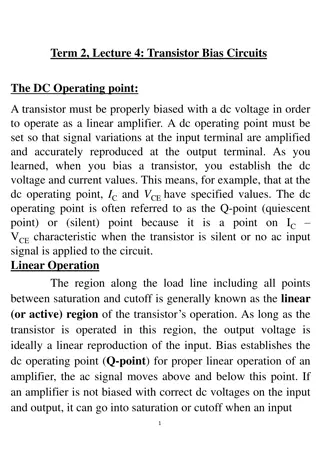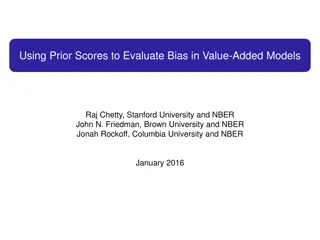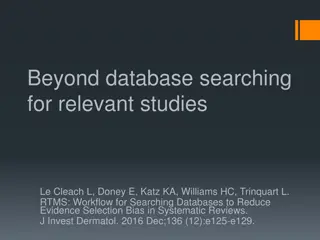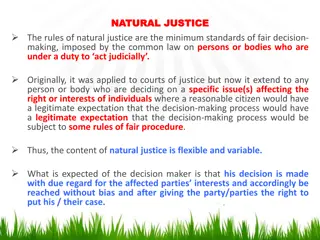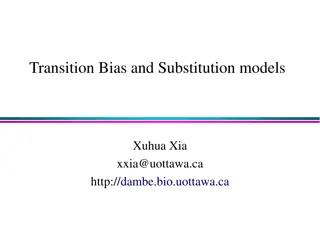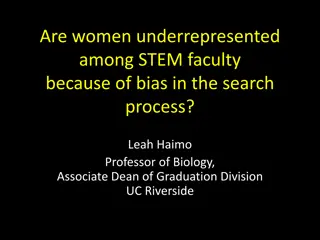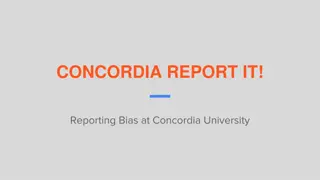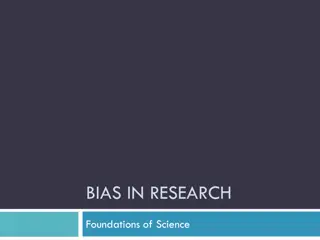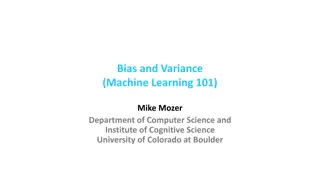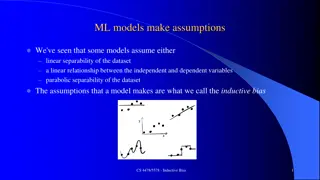A REVIEW OF BIAS IN DECISION-MAKING MODELS
Delve into the assessment of bias in decision-making models, exploring its impact on variables and ways to prevent bias. Review the development of decision-making environments, identify bias paths, and acknowledge its effects on model variables. Gain insights on strategies to avoid bias through this comprehensive analysis of biased decision-making models.
Download Presentation

Please find below an Image/Link to download the presentation.
The content on the website is provided AS IS for your information and personal use only. It may not be sold, licensed, or shared on other websites without obtaining consent from the author.If you encounter any issues during the download, it is possible that the publisher has removed the file from their server.
You are allowed to download the files provided on this website for personal or commercial use, subject to the condition that they are used lawfully. All files are the property of their respective owners.
The content on the website is provided AS IS for your information and personal use only. It may not be sold, licensed, or shared on other websites without obtaining consent from the author.
E N D
Presentation Transcript
A REVIEW OF BIAS IN DECISION-MAKING MODELS Peter Poon Chong, Terrence R.M. Lalla Faculty of Engineering, The University of the West Indies, Trinidad IConETech-2020, Faculty of Engineering, The UWI, St. Augustine, Trinidad and Tobago
INTRODUCTION DECISION-MAKING Rational Intuitive bias IConETech-2020, Faculty of Engineering, The UWI, St. Augustine, Trinidad and Tobago
OBJECTIVES Appraised the development of the decision-making environment. Identify the path of bias. Acknowledge the effect of bias on the variables used in models. Share some concepts that can assist in the avoidance of bias. Receive feedback. IConETech-2020, Faculty of Engineering, The UWI, St. Augustine, Trinidad and Tobago
METHODOLOGY This presentation embodies the findings at the early stage of a research to model the manufacture of musical instruments. Desk study approach. A collection of qualitative research documents on: Decision-Making Models. Model variables. Bias. IConETech-2020, Faculty of Engineering, The UWI, St. Augustine, Trinidad and Tobago
DECISION-MAKING Decision-making models begin when an actor (an individual or team) desire change of an existing state after discovering a problem. IConETech-2020, Faculty of Engineering, The UWI, St. Augustine, Trinidad and Tobago
STEPS IN DECISION-MAKING Figure General procedure for decision-making IConETech-2020, Faculty of Engineering, The UWI, St. Augustine, Trinidad and Tobago
MODELS Models diligently simulate an environment to determine a most accepted and plausible response. A model can be considered a mathematical expression closely emulating Physical system or process composed of variables or decision parameters. Constants and adjustment parameters. Input parameters, data. Phase/output parameters, noise and random parameters. IConETech-2020, Faculty of Engineering, The UWI, St. Augustine, Trinidad and Tobago
MODELS Dependent Variable = ? Independent Variables,Parameters,Forcing Functions Dependent Variable reflect the system behavior. Independent Variables are dimensions that determine the system behavior. Parameters reflect the system s properties or composition. Forcing Functions are the peripheral impacts acting upon the system. IConETech-2020, Faculty of Engineering, The UWI, St. Augustine, Trinidad and Tobago
FEATURE SELECTION Table Types of variable learning sources Relation Observations from our sensory organs Source Data Form Direct Sensory Experience Responses from sight, smell, taste, touch, and hearing. From conversation, reading and media. Data gathering instrumentation. Belief system deduced, induced and reasoned. Dreams, Subconscious, hallucinations, superstitiously invoked. Authority Perceived experiences Electromechanical Sensor Reflection Physical measurements Reorganized thoughts observed Human internalizing Mystic IConETech-2020, Faculty of Engineering, The UWI, St. Augustine, Trinidad and Tobago
BIAS Table Foundations of Bias Category Source Cause Rational decision- making Experience; Conversion costs and/or uncertainty. Learning; Comparison to similar situations. Cognitive misperceptions Failure; Re-entering Endowment effect- Snowball effect of negative memories. experience; Anchoring. Psychological Misperceived sunk costs; Regret avoidance; Non/optimal Self- perception. Commitment; Disagreeable experience; Change undesirable. IConETech-2020, Faculty of Engineering, The UWI, St. Augustine, Trinidad and Tobago
FINDINGS Status quo bias Product of combined unconscious behaviors performed without retrospective favor. Stresses of Decision-Making Variety of data sources, partial and contradicting. Continuously changing environment. Management of actors. Adverse working environment. Failure is not an option. Work overload and Time not managed. Threatening environment. IConETech-2020, Faculty of Engineering, The UWI, St. Augustine, Trinidad and Tobago
FINDINGS Care should be taken to provide continuous monitoring of the systems by a manageable ethical team highly competent, cross- functional and willing to learn. IConETech-2020, Faculty of Engineering, The UWI, St. Augustine, Trinidad and Tobago
DISCUSSION Control of rational and intuitive decision-making environments eases concerns of actors during the process. According to White, one should apply intelligent systems to automated systems where the environment already exists as venturing into systems with a high degree of understanding. Unknown systems can be applied experimentally to determine cause and effect situations. IConETech-2020, Faculty of Engineering, The UWI, St. Augustine, Trinidad and Tobago
DISCUSSION Its risky to run systems automatically with algorithms that initiate and carry out calibrations or changes in its supervised data profiles. Developing decision-making models should comprise a complex management system operated with persons trained in the discipline of the subject analyzed and psychology. IConETech-2020, Faculty of Engineering, The UWI, St. Augustine, Trinidad and Tobago
VALUE AND PRACTICAL IMPLICATION Quality Improves when Cognizance of bias. Periodically monitor the model with an ethically competent team. Under a controlled and assented environment. IConETech-2020, Faculty of Engineering, The UWI, St. Augustine, Trinidad and Tobago
CONCLUSION The components and purpose of models were explored to introduce the selection, influences, and bias on variables. It was evident that an expected model error will always be present in Decision-Making Models. The dynamic human cognition combined with the formations from the conscious and unconscious biased circuit within the mind contributes to error. Evolving intelligent systems require full attention of actors to ensure an ethical result. IConETech-2020, Faculty of Engineering, The UWI, St. Augustine, Trinidad and Tobago
FUTURE WORK Focus on the cause and effects of soft environments Future Work to compare the management of hard and soft disciplines of decision-making. IConETech-2020, Faculty of Engineering, The UWI, St. Augustine, Trinidad and Tobago
REFERENCES J.O. Okoli, G. Weller, J. Watt. Information Processing and Intuitive Decision-making on the Fireground: Towards a Model of Expert Intuition. Cognition Technology & Work 18 no. 1 (2016): 89-103. M. N. U. Khan, A. N. S. Ernest. 1995. Development of a Mathematical Hydrologic Model of Santa Gertrudis Creek Wetlands in Kingsville, Texas. ProQuest Dissertations and Theses. J. Kacprzyk, S. Zadro zny, M. Fedrizzi, H. Nurmi. On Group Decision Making, Consensus Reaching, Voting, and Voting Paradoxes under Fuzzy Preferences and a Fuzzy Majority: A Survey and a Granulation Perspective. Handbook of Granular Computing (2008) 907-929. M. H. Bazerman, 2002. Judgment in managerial decision making. Wiley. K. Burmeister, C. Schade. Are entrepreneurs' decisions more biased? An experimental investigation of the susceptibility to status quo bias. Journal of Business Venturing. 22 no. 3, (2007) 340-362. P. Marko. Decision Making: Between Rationality and Reality. Interdisciplinary Description of Complex Systems 7 no. 2, (2009) 78-89. IConETech-2020, Faculty of Engineering, The UWI, St. Augustine, Trinidad and Tobago
THANK YOU! IConETech-2020, Faculty of Engineering, The UWI, St. Augustine, Trinidad and Tobago
